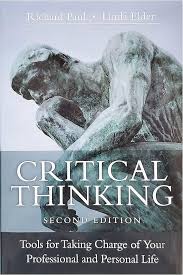White Paper: Critical Thinking for Working Scientists and Engineers
Introduction
Critical thinking is an essential skill for professionals in science and engineering. It enables individuals to analyze information, evaluate arguments, and make informed decisions. This white paper will explore the core concepts of critical thinking, its applications in scientific and engineering fields, and strategies for developing and enhancing these skills.
Core Concepts of Critical Thinking
Critical thinking involves a range of cognitive abilities, including:
- Logical Reasoning: The ability to construct and evaluate arguments based on evidence and logic.
- Problem-Solving: The process of identifying and resolving issues or challenges.
- Decision-Making: The ability to select the best course of action from several alternatives.
- Creativity: The generation of new ideas and innovative solutions.
- Skepticism: The disposition to question assumptions and seek evidence.
Critical Thinking in Problem-Solving
Problem-solving is a fundamental aspect of scientific and engineering work. Critical thinking plays a crucial role in this process by:
- Defining the Problem: Clearly identifying the issue or challenge to be addressed.
- Generating Solutions: Brainstorming and evaluating potential solutions.
- Analyzing Alternatives: Assessing the advantages and disadvantages of each solution.
- Selecting the Best Option: Making an informed decision based on available evidence.
- Implementing and Evaluating: Putting the chosen solution into practice and assessing its effectiveness.
Common Cognitive Biases and Fallacies
Cognitive biases and fallacies can hinder critical thinking. Some common examples include:
- Confirmation bias: The tendency to seek information that confirms existing beliefs.
- Anchoring bias: Relying too heavily on the first piece of information encountered.
- Availability heuristic: Judging the likelihood of events based on their ease of recall.
- Slippery slope fallacy: Assuming that one event will inevitably lead to a chain of negative consequences.
- False dichotomy: Presenting a limited number of options as if they were the only possibilities.
Strategies for Developing Critical Thinking Skills
- Practice Regular Reflection: Regularly evaluate your own thinking processes and identify areas for improvement.
- Seek Diverse Perspectives: Engage with people who hold different viewpoints to challenge your assumptions.
- Question Assumptions: Be skeptical of claims and ask for evidence to support them.
- Practice Logical Reasoning: Develop your ability to construct and analyze arguments.
- Engage in Creative Problem-Solving: Explore unconventional approaches to problem-solving.
- Continuously Learn: Stay updated on the latest developments in your field and seek opportunities for professional development.
Case Studies
- Case Study 1: The Challenger Disaster: Analyze the factors that contributed to the Challenger disaster and how critical thinking could have prevented the tragedy.
- Case Study 2: The Development of the COVID-19 Vaccine: Examine the role of critical thinking in the rapid development and deployment of COVID-19 vaccines.
Conclusion
Critical thinking is an indispensable skill for scientists and engineers. By developing and applying these skills, professionals can enhance their problem-solving abilities, make informed decisions, and contribute to advancements in their fields. contact ias-research.com for details.
References
- Kahneman, D. (2011). Thinking, Fast and Slow. Farrar, Straus and Giroux.
- Paul, R., & Elder, L. (2018). Critical Thinking: What Every Person Needs to Know. Pearson.
- Halpern, D. F. (2015). Thought and Knowledge: An Introduction to Critical Thinking. Routledge.
- Nisbett, R. E., & Ross, L. (1980). Human Inference: Strategies and Shortcomings of Social Judgment. Cambridge University Press.
- Kahneman, D., Slovic, P., & Tversky, A. (1982). Judgment Under Uncertainty: Heuristics and Biases. Cambridge University Press.



